Yota: "Kazan took ..."
It seems that Kazan is lucky - that’s where the fourth generation network (4G), LTE should earn first. At least, the pilot launch of the network took place yesterday and almost everything is ready for full-fledged work.
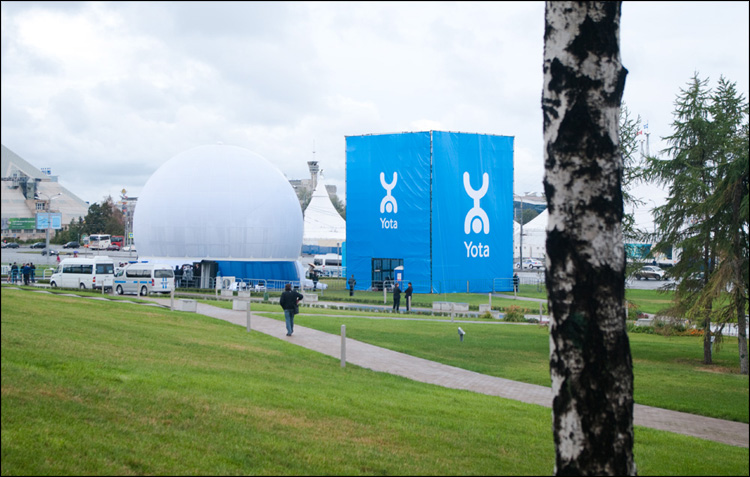
I personally attended the event, so I will share my impressions. Where is the smiley * SHOCKED *?
The launch of the network “accidentally” coincided with the Republic Day - in fact, it was Yota who decided to make a gift to the city, which did everything possible in the shortest possible time.
')
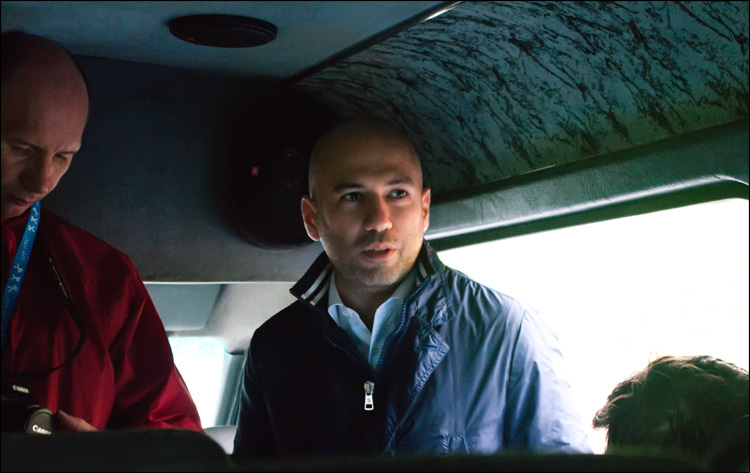
From the airport we were taken almost to the very center of the city, where, despite the rain, the atmosphere of the holiday was felt. By the way, “we” is a multitude of IT and telecom journalists from leading publications and a handful of bloggers ( I , Anton Korobkov , Evgeny @EKozlov Kozlov and my colleague on the GToday project, Oleg Danilov ). We may not be professional journalists, but through Twitter we were the first to convey real-time information to our readers.
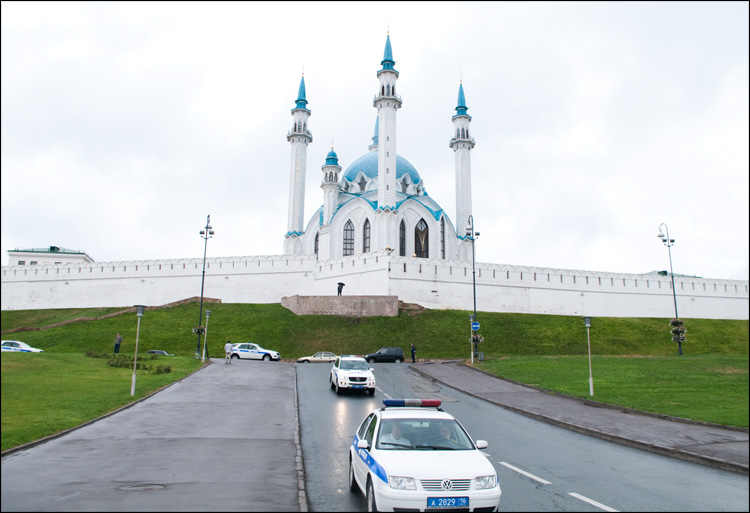
For some time, the FSO employees did not allow all those who came to come to gather in a specially designated place - in a huge balloon and a cube, branded under the colors and symbols of the company. As a joke, we called the ball a new mobile modem for working in LTE networks - by analogy with YotaEgg, just with a “slightly more capacious” battery :)
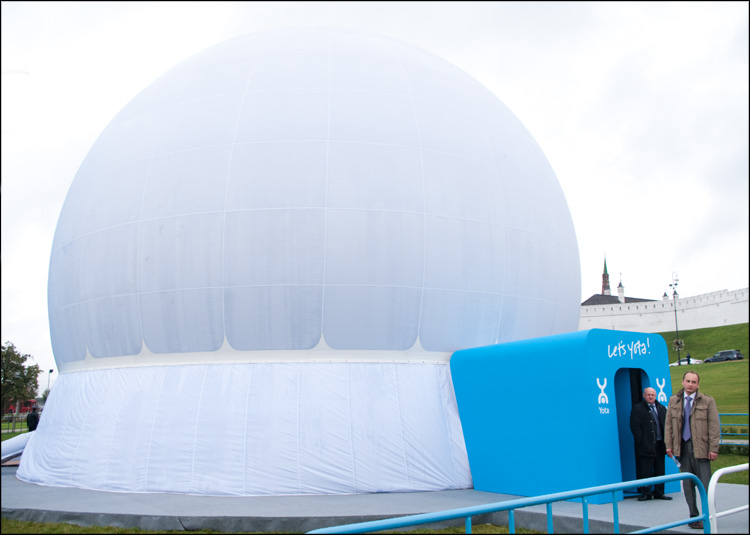
In general, the plans for the day were a bit confused - we decided not to get wet and spent some time in minibuses, and then we went on a small tour of the city. Actually, testing of one of the 4G modems started right on the bus.
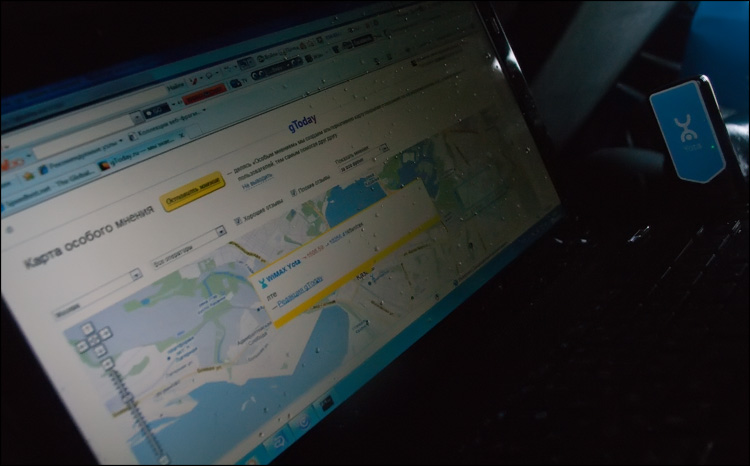
The Yota employee accompanying us pulled out a laptop (one sleepy eye immediately noticed the ASUS inscription, and the second one almost immediately identified the model - K42F :), into the USB port of which the 4G modem engineering sample was inserted.
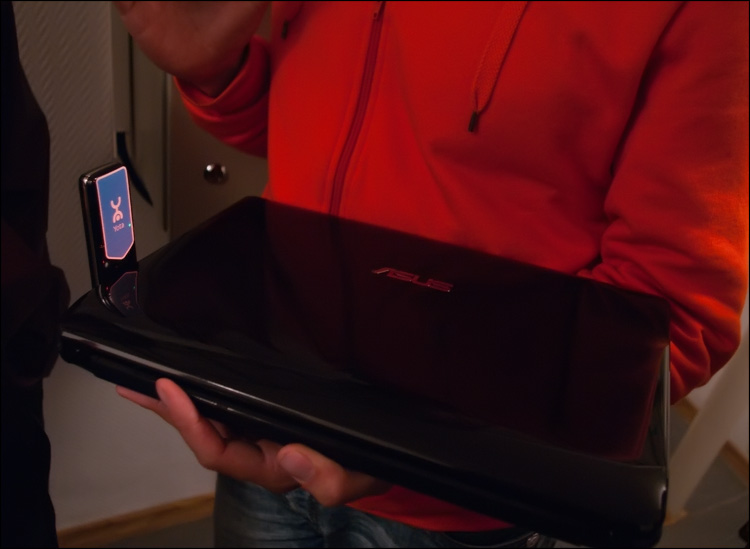
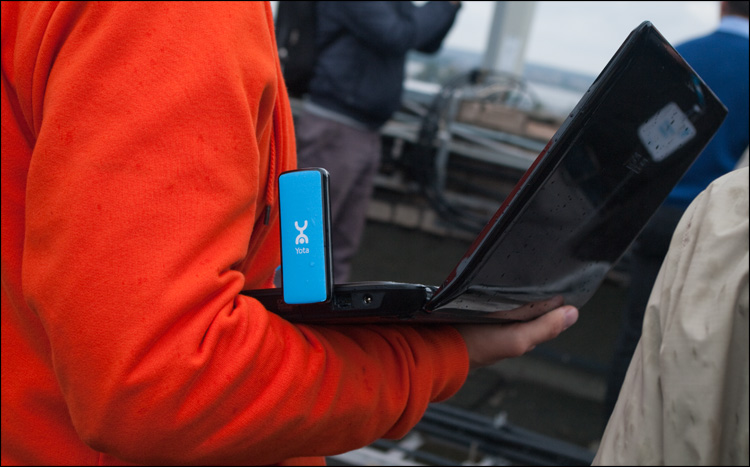
Most of all I wanted to know the results of the speedtest, but a company representative decided to stretch the intrigue and first showed the FullHD video from the Internet! Speedtest (on the move, without an external antenna and far from the BS) gave a result of 21 megabits per download and 10 for upload.
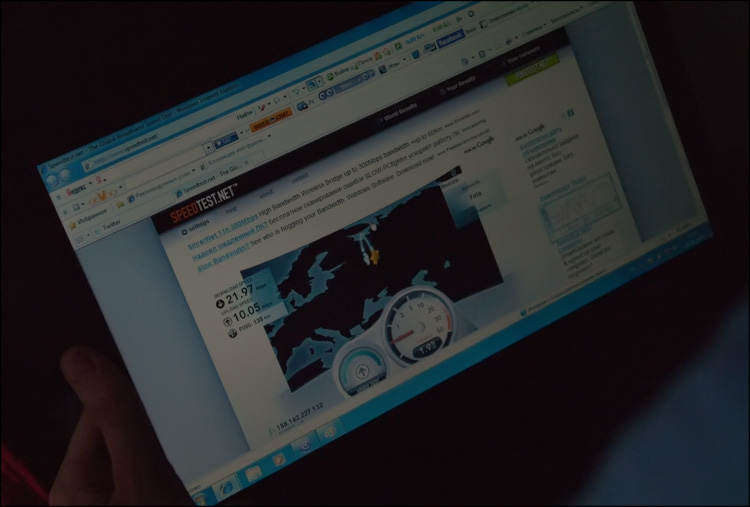
A little later, we visited an unremarkable building, inside which there was a BS-ka. Previously, I had a completely different meaning of this term, but in reality everything turned out to be much more modest - a small metal cabinet stuffed with various electronics.
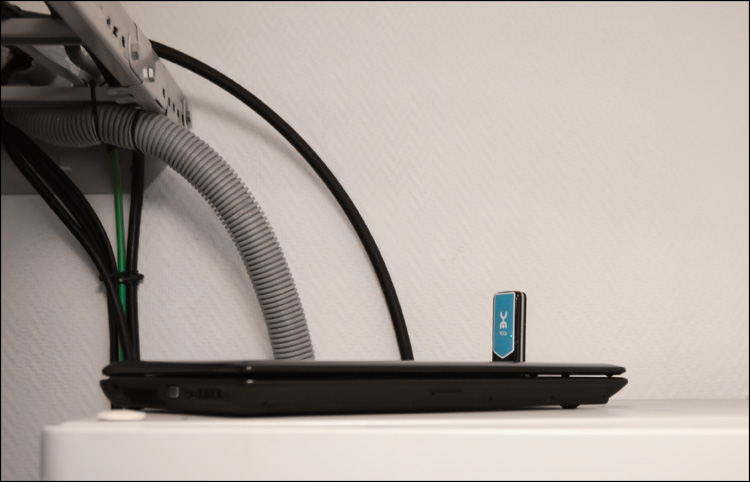
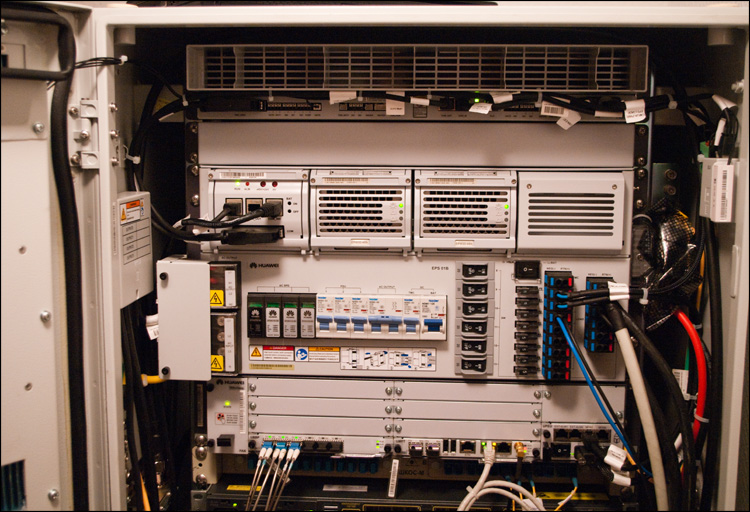
Now in Kazan there are 147 base stations, which in total cover almost the entire city. At the moment, not all are involved - connections are waiting for about 50 BS, but they are just waiting in the wings - there should be no problems with connecting.
On the roof of the building there were many antennas, among which were the new 4G-shnye. As they are not confused - it is not clear, even if they signed ...
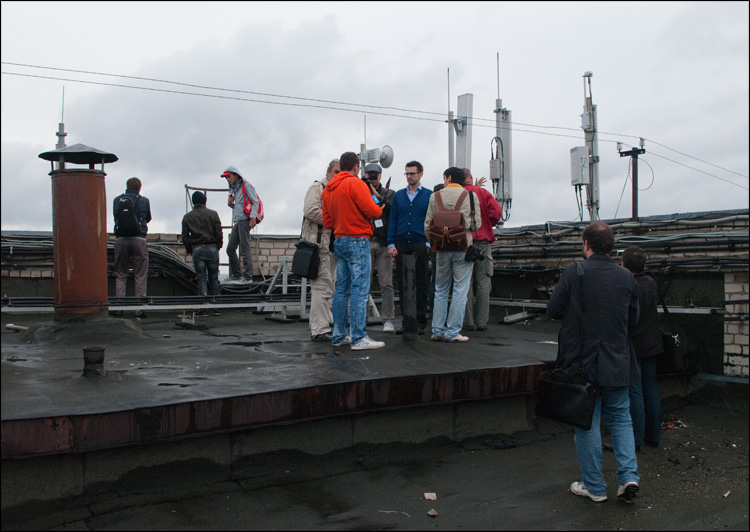
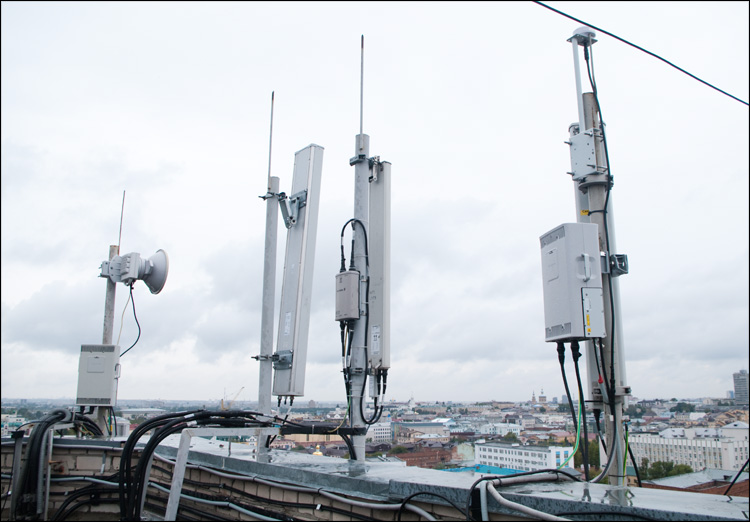
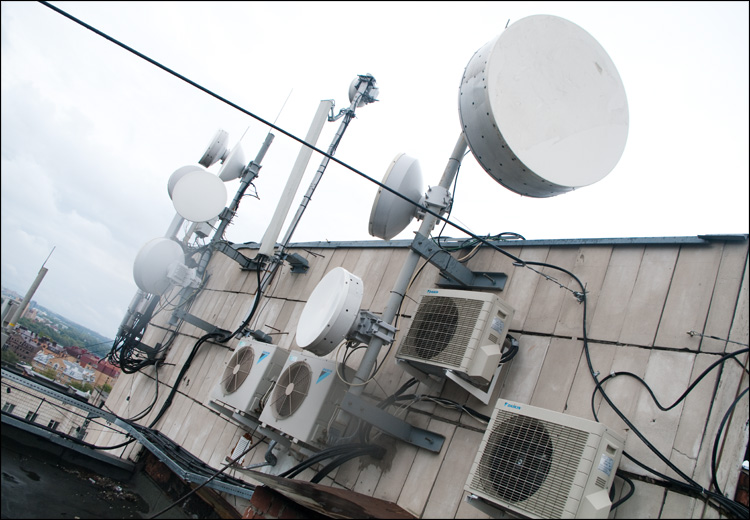
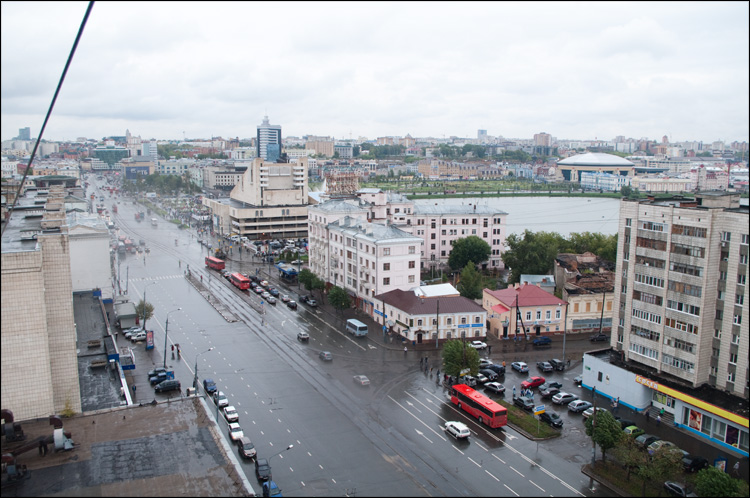
Having returned to the center, we were finally allowed to enter the giant Yota-egg, in which company demonstration pieces of iron were set around the perimeter. A couple of minutes later, Denis Sverdlov (CEO of Scartel) welcomed all those present and began his presentation. Some plans of the company and answers to journalists' questions were told - I will not retell anything. Key points:
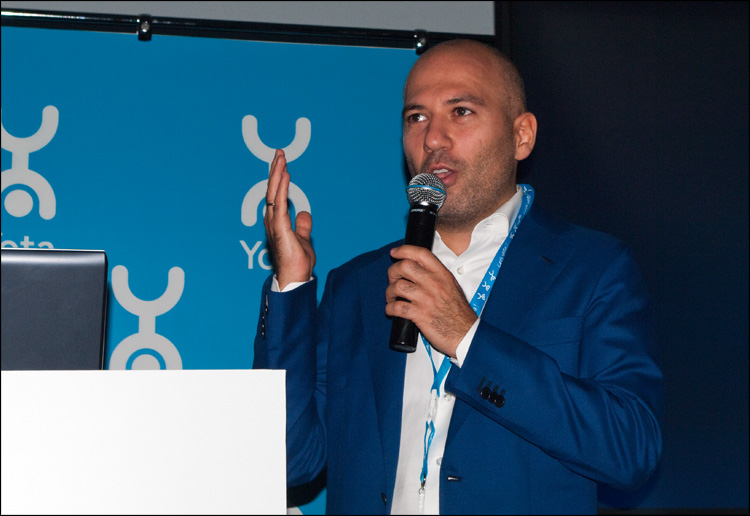
 At the moment, it all depends on the higher authorities. The network deployed in Kazan was built and launched as a pilot project, not a test zone. Respect deserves the leadership of the republic, which is fully met to meet new technologies. Further fate lies entirely in the hands of the “regulator”.
At the moment, it all depends on the higher authorities. The network deployed in Kazan was built and launched as a pilot project, not a test zone. Respect deserves the leadership of the republic, which is fully met to meet new technologies. Further fate lies entirely in the hands of the “regulator”.
 If “OK” is received “from above”, then 4G-networks will definitely be. At least, similar networks should appear by the end of the year in four more million-plus cities, including Samara and Novosibirsk. The other two cities were not named because they didn’t want to “tempt fate” ahead of time. But it is known for sure that these are cities where currently there are no WiMAX networks. So those cities in which WiMAX is at the moment, while in the span :)
If “OK” is received “from above”, then 4G-networks will definitely be. At least, similar networks should appear by the end of the year in four more million-plus cities, including Samara and Novosibirsk. The other two cities were not named because they didn’t want to “tempt fate” ahead of time. But it is known for sure that these are cities where currently there are no WiMAX networks. So those cities in which WiMAX is at the moment, while in the span :)
 Building a new network is not at all difficult (relatively, of course) - much more “paper” hassle.
Building a new network is not at all difficult (relatively, of course) - much more “paper” hassle.

All further points will be relevant in the case of the same "OK" from the higher authorities.
 Now there are several prototypes of devices for work in the networks of the new generation - some of them will soon fall into the hands of active network users wishing to take part in testing a new technology.
Now there are several prototypes of devices for work in the networks of the new generation - some of them will soon fall into the hands of active network users wishing to take part in testing a new technology.
 Approximately, the price of devices for work in the 4G network will not exceed 3,500-4,000 rubles. In the future, the price will only decrease.
Approximately, the price of devices for work in the 4G network will not exceed 3,500-4,000 rubles. In the future, the price will only decrease.
 At the moment, the maximum speed of work (obtained in “greenhouse” conditions close to ideal) in a 4G network is about 100 Mbit / s for downloading. But Denis Sverdlov honestly admitted that in reality (with the load and taking into account the urban development) the speed will be somewhat lower. But in any case, higher than any other currently available mobile wireless technology :)
At the moment, the maximum speed of work (obtained in “greenhouse” conditions close to ideal) in a 4G network is about 100 Mbit / s for downloading. But Denis Sverdlov honestly admitted that in reality (with the load and taking into account the urban development) the speed will be somewhat lower. But in any case, higher than any other currently available mobile wireless technology :)
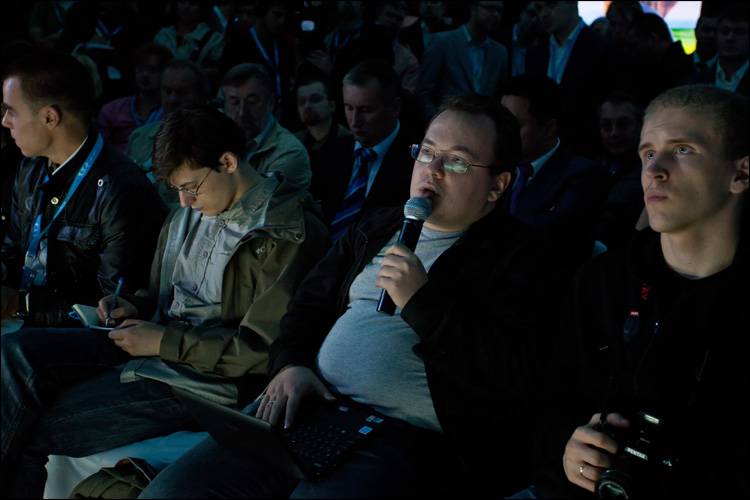
 At the moment, the company is ready for high base station loads, but with the advent of LTE, load balancing technology will be implemented, which will automatically distribute the load across all available base stations, regardless of the device.
At the moment, the company is ready for high base station loads, but with the advent of LTE, load balancing technology will be implemented, which will automatically distribute the load across all available base stations, regardless of the device.
 Devices for working in WiMAX networks will be incompatible with LTE networks, however, they will be able to operate from one “account” within one tariff. Those. to access the Internet in different cities you will have to take two devices with you, but you will not have to take care of the balance on each of them.
Devices for working in WiMAX networks will be incompatible with LTE networks, however, they will be able to operate from one “account” within one tariff. Those. to access the Internet in different cities you will have to take two devices with you, but you will not have to take care of the balance on each of them.
 There will still be two tariffs - unlimited for a month and it is for a day.
There will still be two tariffs - unlimited for a month and it is for a day.
 In addition to LTE, the WiMAX network will continue to be deployed in many large cities according to the company's promises. For some, this is no less pleasant news :) The plans for the coming year are to cover all millionaire cities, in the future several years - the majority of cities with a population of 250 thousand inhabitants - at the moment permission for the range 2.5-2.7 GHz Scartel has for 180 cities.
In addition to LTE, the WiMAX network will continue to be deployed in many large cities according to the company's promises. For some, this is no less pleasant news :) The plans for the coming year are to cover all millionaire cities, in the future several years - the majority of cities with a population of 250 thousand inhabitants - at the moment permission for the range 2.5-2.7 GHz Scartel has for 180 cities.
Further examples of the application of the new network were shown. For example, some office vehicles of the city (such as ambulance and other tow trucks) were equipped with HD cameras, which in real time transmitted the image to a large screen in the center of our premises. Almost without delay, and, I repeat, in HD-quality - to the extent that you could see the numbers on the cars in front.

All this was applied to an interactive map of the city. What is not a dream DVR?
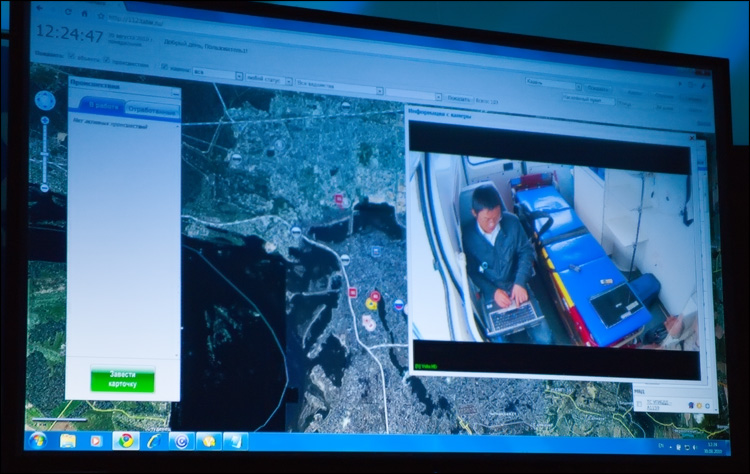
Other applications - e-government, remote education, etc. - if you think about it, then you can come up with a lot of scenarios. There would be a landing strip, and there will be airplanes)
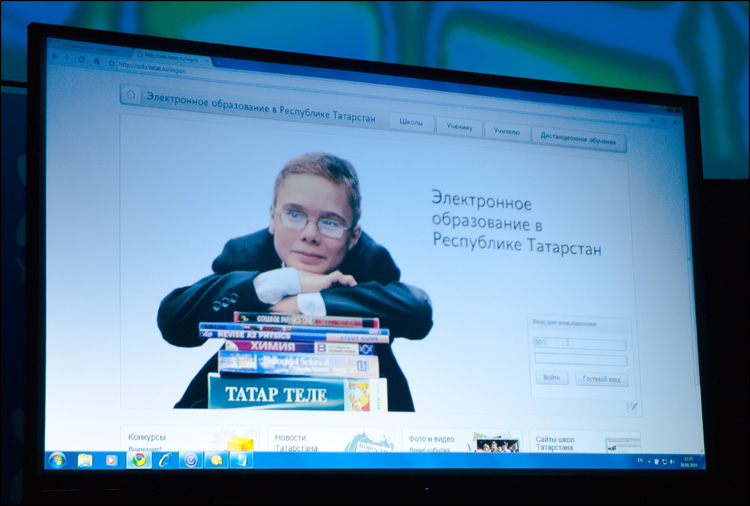
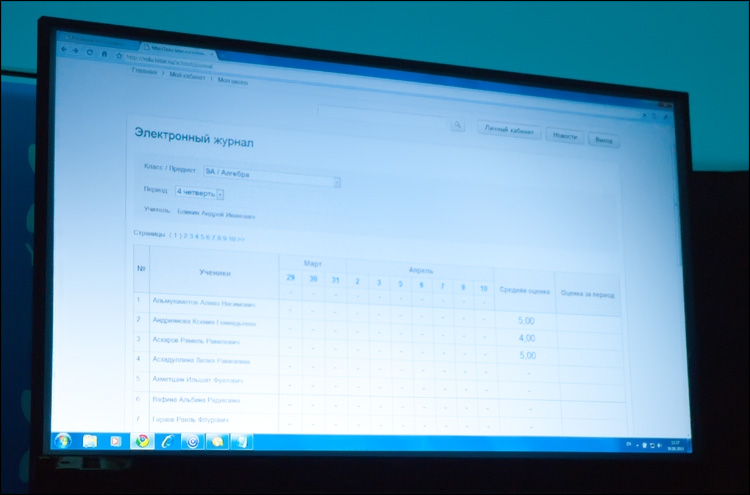
I could not deny myself the pleasure of personally feeling a few laptops with 4G modems. On average, the speed varied from 50-80 Mbps for downloading and 10-30 Mbps for uploads - it's hard to believe that this is all over the wireless interface. And at the same time it is very cool - even on my home (wired) connection, these numbers are not always the case .

In addition to the devices for users, there was a new base station in the hall - not as dusty as we saw earlier :) According to a technician, these can be installed right on the street, without any additional protective equipment. Well, the 3D video conferencing was - it was possible to live to “touch the interlocutors” on a 120 Hz monitor.
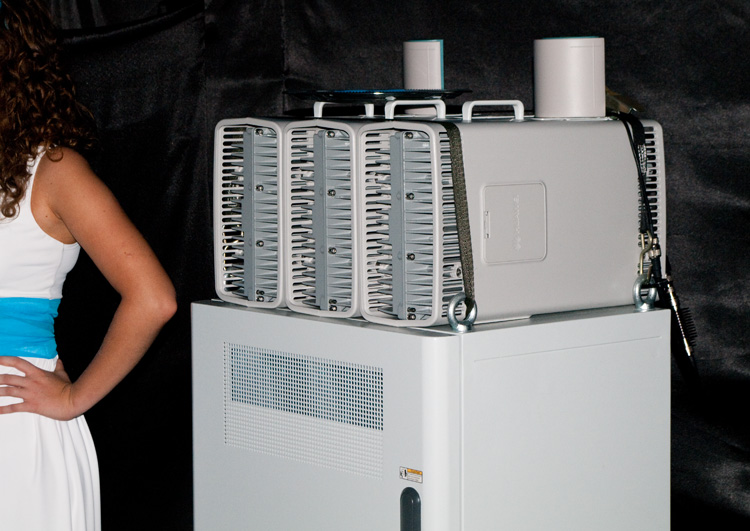
Later we had an interesting excursion around the city and to the IT-Park data center (I'll write more about that), and after that we flew back home.
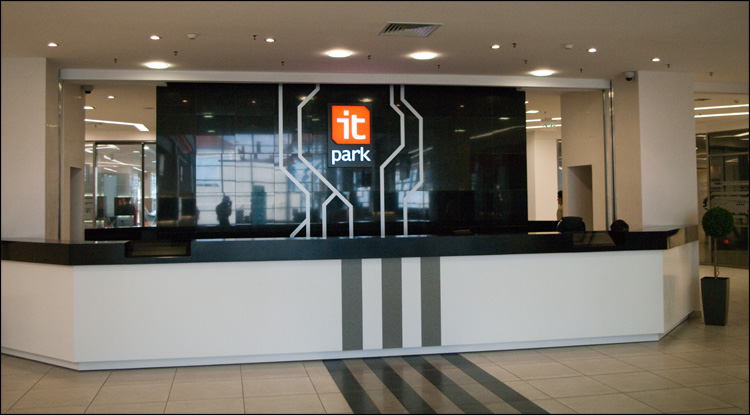
 Tomorrow on the project GToday will be published a video from the presentation, where Denis Sverdlov answers many other questions.
Tomorrow on the project GToday will be published a video from the presentation, where Denis Sverdlov answers many other questions.
“There is no wire for doubt” that with such technologies the future is only a question of who, when and where will launch them. As you can see, in the case of the Yota company, the wireless network of the new generation is almost ready and over time it will be able to easily turn around in any other city. But, as is customary in our country, everything depends on state authorities, who in every way do not want to give the frequency range to a good cause. So, it is possible to take an example from the government of Kazan - taking care of the residents of the city, it took upon itself a great responsibility and provided unprecedented support, thanks to which the entire network was built in less than 2 months.
We, ordinary users, can only hope that this issue will be resolved and as soon as possible - such a turn of events can greatly improve our life with you. And I’m not talking about “contact with pictures on the phone,” but about the huge potential that will emerge with the successful combination of circumstances of a promising technology.
And this is not a “greitain triken” for you, for the purpose of which you can earn all the money in this world by providing eerie service. This - at the moment it really is the best and wireless of what megalopolis users can choose, with a truly human service. I am an optimist, so I will believe in the best and, by what I can, I will help :)
Successes!

I personally attended the event, so I will share my impressions. Where is the smiley * SHOCKED *?
The launch of the network “accidentally” coincided with the Republic Day - in fact, it was Yota who decided to make a gift to the city, which did everything possible in the shortest possible time.
')

From the airport we were taken almost to the very center of the city, where, despite the rain, the atmosphere of the holiday was felt. By the way, “we” is a multitude of IT and telecom journalists from leading publications and a handful of bloggers ( I , Anton Korobkov , Evgeny @EKozlov Kozlov and my colleague on the GToday project, Oleg Danilov ). We may not be professional journalists, but through Twitter we were the first to convey real-time information to our readers.

For some time, the FSO employees did not allow all those who came to come to gather in a specially designated place - in a huge balloon and a cube, branded under the colors and symbols of the company. As a joke, we called the ball a new mobile modem for working in LTE networks - by analogy with YotaEgg, just with a “slightly more capacious” battery :)

In general, the plans for the day were a bit confused - we decided not to get wet and spent some time in minibuses, and then we went on a small tour of the city. Actually, testing of one of the 4G modems started right on the bus.

The Yota employee accompanying us pulled out a laptop (one sleepy eye immediately noticed the ASUS inscription, and the second one almost immediately identified the model - K42F :), into the USB port of which the 4G modem engineering sample was inserted.


Most of all I wanted to know the results of the speedtest, but a company representative decided to stretch the intrigue and first showed the FullHD video from the Internet! Speedtest (on the move, without an external antenna and far from the BS) gave a result of 21 megabits per download and 10 for upload.

A little later, we visited an unremarkable building, inside which there was a BS-ka. Previously, I had a completely different meaning of this term, but in reality everything turned out to be much more modest - a small metal cabinet stuffed with various electronics.


Now in Kazan there are 147 base stations, which in total cover almost the entire city. At the moment, not all are involved - connections are waiting for about 50 BS, but they are just waiting in the wings - there should be no problems with connecting.
On the roof of the building there were many antennas, among which were the new 4G-shnye. As they are not confused - it is not clear, even if they signed ...




Having returned to the center, we were finally allowed to enter the giant Yota-egg, in which company demonstration pieces of iron were set around the perimeter. A couple of minutes later, Denis Sverdlov (CEO of Scartel) welcomed all those present and began his presentation. Some plans of the company and answers to journalists' questions were told - I will not retell anything. Key points:

 At the moment, it all depends on the higher authorities. The network deployed in Kazan was built and launched as a pilot project, not a test zone. Respect deserves the leadership of the republic, which is fully met to meet new technologies. Further fate lies entirely in the hands of the “regulator”.
At the moment, it all depends on the higher authorities. The network deployed in Kazan was built and launched as a pilot project, not a test zone. Respect deserves the leadership of the republic, which is fully met to meet new technologies. Further fate lies entirely in the hands of the “regulator”. If “OK” is received “from above”, then 4G-networks will definitely be. At least, similar networks should appear by the end of the year in four more million-plus cities, including Samara and Novosibirsk. The other two cities were not named because they didn’t want to “tempt fate” ahead of time. But it is known for sure that these are cities where currently there are no WiMAX networks. So those cities in which WiMAX is at the moment, while in the span :)
If “OK” is received “from above”, then 4G-networks will definitely be. At least, similar networks should appear by the end of the year in four more million-plus cities, including Samara and Novosibirsk. The other two cities were not named because they didn’t want to “tempt fate” ahead of time. But it is known for sure that these are cities where currently there are no WiMAX networks. So those cities in which WiMAX is at the moment, while in the span :) Building a new network is not at all difficult (relatively, of course) - much more “paper” hassle.
Building a new network is not at all difficult (relatively, of course) - much more “paper” hassle.
All further points will be relevant in the case of the same "OK" from the higher authorities.
 Now there are several prototypes of devices for work in the networks of the new generation - some of them will soon fall into the hands of active network users wishing to take part in testing a new technology.
Now there are several prototypes of devices for work in the networks of the new generation - some of them will soon fall into the hands of active network users wishing to take part in testing a new technology. Approximately, the price of devices for work in the 4G network will not exceed 3,500-4,000 rubles. In the future, the price will only decrease.
Approximately, the price of devices for work in the 4G network will not exceed 3,500-4,000 rubles. In the future, the price will only decrease. At the moment, the maximum speed of work (obtained in “greenhouse” conditions close to ideal) in a 4G network is about 100 Mbit / s for downloading. But Denis Sverdlov honestly admitted that in reality (with the load and taking into account the urban development) the speed will be somewhat lower. But in any case, higher than any other currently available mobile wireless technology :)
At the moment, the maximum speed of work (obtained in “greenhouse” conditions close to ideal) in a 4G network is about 100 Mbit / s for downloading. But Denis Sverdlov honestly admitted that in reality (with the load and taking into account the urban development) the speed will be somewhat lower. But in any case, higher than any other currently available mobile wireless technology :)
 At the moment, the company is ready for high base station loads, but with the advent of LTE, load balancing technology will be implemented, which will automatically distribute the load across all available base stations, regardless of the device.
At the moment, the company is ready for high base station loads, but with the advent of LTE, load balancing technology will be implemented, which will automatically distribute the load across all available base stations, regardless of the device. Devices for working in WiMAX networks will be incompatible with LTE networks, however, they will be able to operate from one “account” within one tariff. Those. to access the Internet in different cities you will have to take two devices with you, but you will not have to take care of the balance on each of them.
Devices for working in WiMAX networks will be incompatible with LTE networks, however, they will be able to operate from one “account” within one tariff. Those. to access the Internet in different cities you will have to take two devices with you, but you will not have to take care of the balance on each of them. There will still be two tariffs - unlimited for a month and it is for a day.
There will still be two tariffs - unlimited for a month and it is for a day. In addition to LTE, the WiMAX network will continue to be deployed in many large cities according to the company's promises. For some, this is no less pleasant news :) The plans for the coming year are to cover all millionaire cities, in the future several years - the majority of cities with a population of 250 thousand inhabitants - at the moment permission for the range 2.5-2.7 GHz Scartel has for 180 cities.
In addition to LTE, the WiMAX network will continue to be deployed in many large cities according to the company's promises. For some, this is no less pleasant news :) The plans for the coming year are to cover all millionaire cities, in the future several years - the majority of cities with a population of 250 thousand inhabitants - at the moment permission for the range 2.5-2.7 GHz Scartel has for 180 cities.Further examples of the application of the new network were shown. For example, some office vehicles of the city (such as ambulance and other tow trucks) were equipped with HD cameras, which in real time transmitted the image to a large screen in the center of our premises. Almost without delay, and, I repeat, in HD-quality - to the extent that you could see the numbers on the cars in front.

All this was applied to an interactive map of the city. What is not a dream DVR?

Other applications - e-government, remote education, etc. - if you think about it, then you can come up with a lot of scenarios. There would be a landing strip, and there will be airplanes)


Anbelivebl
I could not deny myself the pleasure of personally feeling a few laptops with 4G modems. On average, the speed varied from 50-80 Mbps for downloading and 10-30 Mbps for uploads - it's hard to believe that this is all over the wireless interface. And at the same time it is very cool - even on my home (wired) connection, these numbers are not always the case .

In addition to the devices for users, there was a new base station in the hall - not as dusty as we saw earlier :) According to a technician, these can be installed right on the street, without any additional protective equipment. Well, the 3D video conferencing was - it was possible to live to “touch the interlocutors” on a 120 Hz monitor.

Later we had an interesting excursion around the city and to the IT-Park data center (I'll write more about that), and after that we flew back home.

 Tomorrow on the project GToday will be published a video from the presentation, where Denis Sverdlov answers many other questions.
Tomorrow on the project GToday will be published a video from the presentation, where Denis Sverdlov answers many other questions.The end
“There is no wire for doubt” that with such technologies the future is only a question of who, when and where will launch them. As you can see, in the case of the Yota company, the wireless network of the new generation is almost ready and over time it will be able to easily turn around in any other city. But, as is customary in our country, everything depends on state authorities, who in every way do not want to give the frequency range to a good cause. So, it is possible to take an example from the government of Kazan - taking care of the residents of the city, it took upon itself a great responsibility and provided unprecedented support, thanks to which the entire network was built in less than 2 months.
We, ordinary users, can only hope that this issue will be resolved and as soon as possible - such a turn of events can greatly improve our life with you. And I’m not talking about “contact with pictures on the phone,” but about the huge potential that will emerge with the successful combination of circumstances of a promising technology.
And this is not a “greitain triken” for you, for the purpose of which you can earn all the money in this world by providing eerie service. This - at the moment it really is the best and wireless of what megalopolis users can choose, with a truly human service. I am an optimist, so I will believe in the best and, by what I can, I will help :)
Successes!
Source: https://habr.com/ru/post/103173/
All Articles